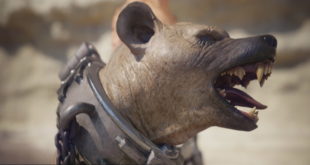Back in the semi-early days of arcade and video games – once we had progressed beyond simple geometric shapes such as Pac-Man’s sliced circle or Asteroids’ rotating arrow – character design was crucial. It was a challenge. Developers had to make every pixel count to ensure the star of their game didn’t look too similar to a moustached plumber or a blue hedgehog.
And yet ironically, as tools and graphical capabilities have improved, a push towards realism has led to many of the industry’s leading franchises veering towards generic protagonists. How often does a best-seller have someone other than a muscular, gun-wielding man or a svelte female on the cover?
The tide is slowly starting to turn, with a number of developers working hard to design more unusual characters – and not just for kids or family titles. Blizzard has often spoken of how important diversity has been when designing the cast of upcoming shooter Overwatch, while Hi-Rez Studios has based the fighters in its MOBA Smite on the gods of various cultures in the hopes of achieving global appeal.
During a panel at PAX South earlier this year, Gearbox concept artist Amanda Christensen discussed how the Borderlands team encompass so many body types and ethnicities in its series – and the answer is surprisingly simple.
“It’s just good design,” she told attendees. “It’s way more fun to design people in a huge spectrum than the same generic bro and hot chick over and over again.”
Cédric Guiard, CEO of character animation specialist Eisko, tells Develop that this attitude is spreading: “We find that animators really want to push their craft and I think we’re very much on the cusp of seeing real change in the way that in-game characters are portrayed. This is partly to do with the maturing of the industry and its audience, but also partly due to technological advances. We know that gamers appreciate stories and narrative; the next battle is in creating more diverse characters.”
With demand rising for more diverse characters, developers would do well to equip themselves with the ability to steer away from template protagonists. Certainly there are a variety of comprehensive digital content creation tools on the market from leading tools providers such as Autodesk, The Foundry and Mixamo. In fact, the latter boasts that its own tool has 280 body-altering sliders, allowing for a plethora of character modelling possibilities.
Diversification
But Autodesk’s senior media and entertainment industry marketing manager Maurice Patel warns that designers still need to have fresh ideas to begin with.
“The choice of the character created for a game has nothing to do with the creative tools themselves and everything to do with the design aesthetic and storyline of the game being created,” he says. “This is very much beyond the control of the tools provided.”
In addition to diversity, there is also a push for more relatable characters. Strong females in games such as BioShock Infinite’s Elizabeth and The Last of Us’ Ellie have garnered critical acclaim. While the former might be slightly stylised, the latter is one of the most realistic looking characters out there, standing toe-to-toe with the motion-captured Kevin Spacey of last year’s Call of Duty and Ellen Page of Beyond: Two Souls.
It’s way more fun to design people in a huge spectrum than the same generic bro and hot chick.
Amanda Christensen, Gearbox
But tools firm Ikinema stresses that animators need to push their craft in order to keep up with graphical capabilities. It’s no good having a realistic model if it doesn’t move realistically.
“The quality of game rendering is improving with every new release, but game animation is still somewhat lacking behind,” founder and CEO Alexandre Pechev says. “Characters are still using either just blending of keyframed animation or simple two-bones rigs and, in almost all cases, only on humans. This leads to stiff and unrealistic poses and animation.”
Guiard adds that the facial animation can be just as important: “The biggest challenge for games is to ensure the fidelity of the delivered model to the morphology, materials and expressions of the subject. People’s expressions and the way their faces move – particularly when talking – are all unique and provide a ‘facial fingerprint’ in terms of identifying a particular person, as much as their likeness does.”
He goes on to stress that designers need to pay attention to detail, as a “seemingly small and subtle difference really can make a big impact on how players react to characters”.
Animation costs
The challenge many developers face, particularly smaller studios, is the time, resource and cost required to create enough animations and models to bring diversity to their game’s cast – particularly if you’re using motion and performance capture.
It’s understandable why developers use the same rigs for multiple characters or enemy types, but Mixamo’s Tyler Georgeson says this is where exploring the tools available can really help.
“Building unique libraries of motions can be costly for studios because they have to recreate the wheel with each and every new character that they build,” he says. “We’ve heard horror stories about triple-A studios taking two weeks to source motion capture files from one department to another.
“With 3D animation software, animation teams can easily leverage the motions already in the tool’s collection, making them far easier for artists to find and customise for their own needs. Even if these animations end up being replaced by custom work, the time saved in working out gameplay mechanics and technical problems without having to wait on art assets can cut dev cycle costs big time.”
Cost and increased dev time is also becoming an excuse that even triple-A studios find themselves unable to use. Ubisoft courted controversy last year when claiming that adding a playable female character to Assassin’s Creed: Unity’s co-op mode would have “doubled the workload”, while Call of Duty producer Mark Rubin claimed that bringing females into the series required a whole new engine.
A seemingly small, subtle difference can make a big impact on how players react to characters.
Cédric Guiard, Eisko
Develop spoke to animators at the time who suggested there are plenty of workarounds and Ikinema’s Pechev agrees, adding that there’s still room for improvement.
“More needs to be done, in our opinion, on setting up pipelines for retargeting animation from male to female,” he says, “but with additional controls on top to add a behaviour where certain body parts are additionally modified to give the correct feel. This needs to be done during gameplay to reduce on storage requirements for game animation, but off-line retargeting should be a good first start.”
Guiard adds: “We capture and reproduce female characters in incredible detail, ready for animators to use. This costs no more than capturing a male character.”
Smart moves
That’s all well and good when you’re creating characters whose movement will be powered by the beefier power of PC and the newest consoles. But what of the countless studios trying to bring unique game experience to smart devices?
There are plenty of examples of high-quality animation in mobile games. Camouflaj’s episodic stealth title République, for example, uses mo-cap to bring its characters to life. Third-party tools can be of assistance, but it’s vital to take each platform’s requirements into account – particularly if you plan to deploy to multiple devices.
“Developers have enough challenges to overcome when moving from one platform to another and the tools need to be identical across the board,” says Pechev. “Main characters should and must have the same animation pipeline on all devices so that the look and feel is not ‘lost’ in the translation.”
Guiard adds: “Whilst the graphical performance of mobiles and tablets are increasing year-on-year, it is still obviously some way behind console and PC – the latter of which still leads with regards to the graphical fidelity of character modelling.
“PC can utilise over 35 Facial Action Units – the expressions a face can pull – whereas mobile is restricted to less than ten. This is a major consideration if a game is being released across all platforms, as the consumer wants to see the same recognisable characters in each platform.
“In addition, it’s massively important for studios to maximise their development assets across all platforms. Having the same model for a character that’s usable on mobile, console, and PC, is a massive benefit, from consumer appeal, budgetary consideration and time-saving perspectives.”
More needs to be done on setting up pipelines for retargeting animation from male to female.
Alexandre Pechev, Ikinema
But as Autodesk’s Patel has said, modeling and animation software are merely the tools to bring your vision to life. Diversity and distinct characters begin with design, and if you don’t spend time on this crucial early stage, your game’s protagonist will blend in with the others. It’s also important to put as much time into character design as the overall art style of your title.
Artistic licence
“The primary challenge, for a number of reasons, is ensuring the character matches the style of the game,” says Guiard.
“That’s probably quite obvious, but coming from a film background, all of us at Eisko are aware of parallel challenges within films and games, particularly with regard to casting people with the appropriate appearance to suit the character design of the studio, prior to capturing and reconstructing the model of the character.”
Mixamo’s Georgeson recommends that developers define the art style of their game first: “Find references and start establishing your look. That can help solve a ton of technical headaches before you ever hit them. Going for a blocky 8-bit look? Your polygon budget probably won’t be much of a concern. No transparency? Less draw calls. Flat shading or PBR? Making higher poly characters? Think about how you can leverage your maps to add detail while optimising the mesh topology.”
The visual styles of video games has never been as varied as it is today, but it’s just as important that this variety spreads to the cast of characters populating each virtual world.
While great headway has been made in the last few years, only by fully exploring what artists can do – whether with third-party tools or with in-house software – can developers create the gaming icons of the future.
—
For all the news straight to your inbox, sign up to the Develop Daily.

 MCV/DEVELOP News, events, research and jobs from the games industry
MCV/DEVELOP News, events, research and jobs from the games industry


